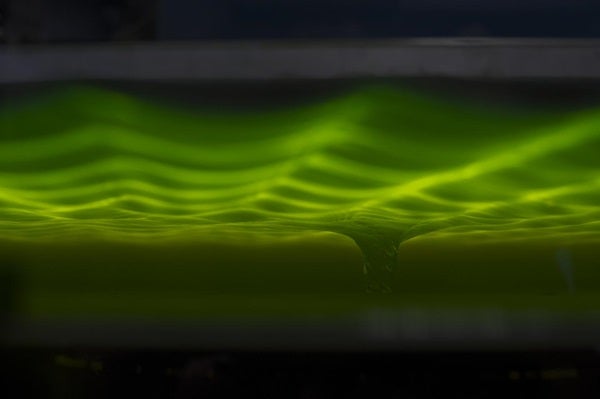The results, which have been published in Nature Physics, represent a big step forward in our understanding of the strange physics that occur around some of the universe’s most extreme objects. Using a wave generator and a pool of water, an interdisciplinary research team led by Silke Weinfurtner at the university’s School of Mathematical Sciences demonstrated the first laboratory evidence for a process called superradiance.
Superradiance is an effect that adds energy to waves — which, in physics, are interchangeable with particles — through dissipation. This process is theorized to occur around spinning black holes as a result of the immense tidal forces stirred up around these objects, which could boost the energy of waves deflected away from the black hole.
First, picture a spinning black hole: think Interstellar. Just outside its event horizon (which signifies the point of no return, inside which even light cannot travel fast enough to escape), spacetime itself becomes warped, pulled along by an effect called frame-dragging, which has been observed to occur around Earth.
Theoretically, any waves (basically, energy) approaching the black hole would be affected by this rotation and its effects; the waves can be deflected away from the black hole, rather than sucked in, picking up additional energy during the process and traveling back out into space. This process of picking up extra energy from the black hole’s rotation is called superradiance. Among other things, this concept is the foundation of Hawking radiation.
But how do researchers turn theory into reality? “Some of the bizarre black hole phenomena are hard, if not, impossible to study directly. This means there are very limited experimental possibilities,” explained Weinfurtner in a press release. But waves, at least, can be recreated easily on Earth with water.
But “easily” is definitely relative; said Weinfurtner, “This research has grown from humble beginnings. I had the initial idea for a water-based experiment when I was at the International School for Advanced Studies in Italy and I set up an experiment with a bucket and a bidet. However, when it caused a flood I … quickly found a lab to work in!”
From those beginnings, the foundation for this experiment grew. The final setup included a nearly 10-foot-long (3m), 5-foot-wide (1.5m), and 20-inch-deep (50cm) bath in which the researchers could study waves interacting with a “black hole” — a drainage hole in the center of the bath. A set of white paper dots, created using a modified sewing machine, made it easier to chart the motion and speed of the waves around the tiny analog black hole.
“This research has been particularly exciting to work on as it has bought together the expertise of physicists, engineers and technicians to achieve our common aim of simulating the conditions of a black hole and proving that superadiance exists,” said Weinfurtner. “We believe our results will motivate further research on the observation of superradiance in astrophysics.”
You can watch the experiment in action below:










